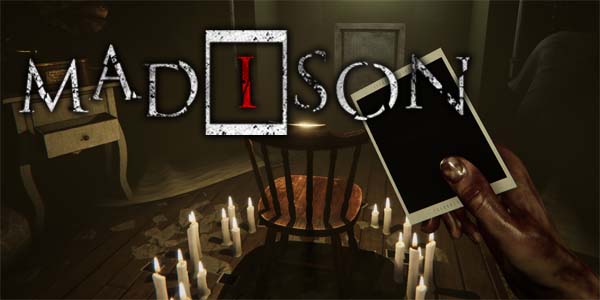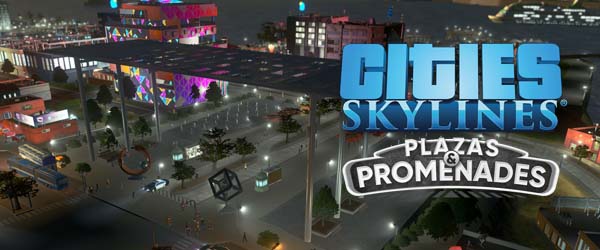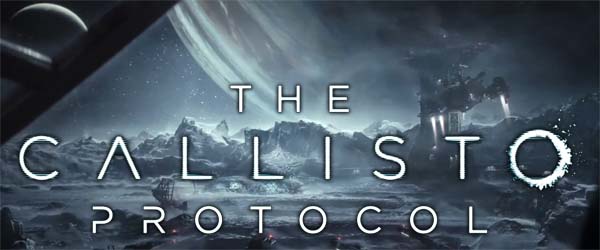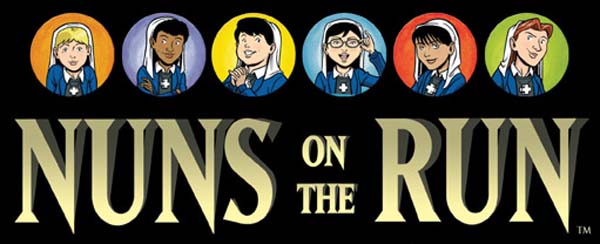
I feel like Halloween just wouldn't be Halloween anymore without playing some new P.T.-inspired indie horror game. This year's "hot" title seemed to be MADiSON by Bloodious Games, which I started playing with a group of 2 friends on Halloween night (after returning from taking the kids Trick or Treating), but we didn't get around to finishing until after the New Year. It wasn't that we didn't want to keep playing. Quite the opposite, in fact. The reason it took so long to finish is because all 3 of us really wanted to keep playing, so I had to wait till all 3 of us were available for a next session before continuing.
In addition to being another indie horror game in a long line of P.T. wannabes, MADiSON also follows in closely off the coattails of Visage. Both games heavily utilize a polaroid flash camera as a critical multi-tool, but MADiSON does one-up Visage by making the camera much more integral to core gameplay. While I only remember the camera in Visage being used as a source of temporary illumination, the camera of MADiSON is both integral to the story, and also absolutely necessary for solving multiple puzzles and for progressing the game's story.
Yet another indie horror game about wandering the halls of a haunted house -- this time with a camera!
Ocular Obscura
The core gimmick of MADiSON is that the player uses a polaroid camera to take pictures of the environment, and the resulting photograph will show things that aren't really there. These photographs will be used as clues to solve a puzzle or to progress the scenario, or taking the picture will just outright trigger the next objective. The house is littered with such puzzles. Unfortunately, the layout of the house, the pacing of the scenario, and the solutions to many puzzles can be a bit on the obtuse side. So much so, in fact, that Bloodious Games resorted to scattering blank polaroids near important objects, which act as obvious signposts that you should take a picture of the thing. This isn't exactly obvious at first, because many such marked objects will get no reaction from the camera until later parts of the scenario, when they become relevant to the current task at hand.
The dense nature of the game's map creates a lot of problems for pacing and signposting. Multiple puzzles, from different chapters of the game, might be present in the same space and could serve to interfere with one another or confuse the player.
This isn't to say that the puzzles are necessarily "bad". Once we realized that the house is littered with red herrings that don't become relevant until later, I actually started to like that these puzzles are a bit more complicated and multi-layered than the typical adventure game fare the we've been getting over the past decade or so. This was, in fact, a big reason why all 3 of us wanted to continue playing the game: we wanted to solve the next puzzle! So many adventure and horror puzzles these days don't get much more complicated than "open a drawer, find a key, and use said key on the one and only lock in that same room." They can feel so patronizing. MADiSON's puzzles definitely do not feel patronizing!
Many puzzles require careful observation and inferences from the environment.
Even if there is a simple clue like a color or a number that is given to the player, there is always some confounding additional factor. It's never just as simple as matching a number or a color or a shape. Most of these puzzles require some careful observation of the player's surroundings, some contextual inferences that won't be obvious to every player, and occasionally a lit bit of arithmetic, spatial, or logic skills. Playing this game in a group actually did help in this regard. Any one of us would have been stuck for a while on multiple puzzles, but there was always one of us who would pick up on a given clue and point it out to the others.
But some of the early puzzles, in particular, are a bit heavy on the red herrings and could definitely have used some better sign-posting and direction.
[More]
49704781-82c7-44a0-b8aa-67e4cff81352|1|5.0
Tags:Madison, Bloodious Games, indie gaming, horror, psychological horror, camera, demon, possession, occult, ritual, inventory, walking simulator, PS5

Looks like we're back to seeing 2 Cities: Skylines expansions being released in the same calendar year. Airports released in January, and now in September, Plazas & Promenades hit digital storefronts. I wonder if this will continue now that most businesses (and presumably Colossal Order) are back to business as usual following the COVID pandemic? Or maybe Colossal Order is migrating towards releasing even smaller, more module micro-expansions such as the recently-released Financial Districts DLC (which I'll review later)? Or will we finally see an announcement on the rumored sequel to Cities: Skylines soon?
Based on previews, I was expecting this expansion to completely change the way that I build my cities by giving me more freedom to pack structures into compact spaces and to more seamlessly integrate parks with business districts, leisure and tourism districts, or neighborhoods. I immediately started thinking of multiple ways that I could potentially use these 2 ideas to create new city layouts and concepts. Unfortunately, I set my expectations too high, and pedestrian areas ended up not being quite as game-changing as I thought and hoped they might. The big problem is that Plazas & Promenades is just another iteration of the paintable area concept that has been the focus of almost every expansion since Parklife. Paintable areas is a good mechanic for things like parks and university campuses, but it can be extremely limiting for an application as broad as neighborhoods or entire districts.
Plazas & Promenades allows the construction of more walkable neighborhoods and districts.
Roads minus the cars
First and foremost is the simple fact that the new pedestrian roads look and act more like regular roads than like pedestrian paths. They are the same size as roads, being either 2 or 4 tiles wide, and are laid out almost exactly the same. None of these pedestrian roads are 1 tile wide. And, of course, the legacy pedestrian paths have not been updated to allow buildings to be zoned along them. The end result is that these "Pedestrian Zones" don't take up any less space, and aren't any more compact than any other district. Though, the high-density, "wall-to-wall" residential buildings do have the same capacity as the normal, high-density residential skyscrapers (20-26 households), despite being a fraction of the size. So I guess it's "more compact" vertically? More people being crammed into smaller spaces? If so, it doesn't seem to have any impact on the citizen's happiness or satisfaction ratings.
Using Pedestrian roads outside of Pedestrian Areas is a liability, since zoned buildings may build on them.
Even though pedestrian roads can be placed anywhere, buildings can only be placed or zoned along them if they are in a dedicated Pedestrian Area. So if I want to create a single walkway or alleyway and zone some homes or shops along it, I have to paint the entire area as a Pedestrian Area. Well, at least, that is the case if you want the buildings to be functional. The game actually will let the player zone and place buildings along pedestrian roads outside of pedestrian areas, but doing so will result in the building flashing a "Not in Pedestrian Zone" warning, and the building won't operate.
[More]
18d09944-68e9-4886-b7fb-12dd3b3e66a3|1|5.0
Tags:Cities: Skylines, Cities: Skylines: Plazas and Promenades, Colossal Order, Paradox Interactive, steam, PC, expansion, pedestrian, roads, plaza, promenade, park, seaside resorts, mid-century modern, beach, boardwalk

I have a confession to make ... a confession that I don't make lightly...
I'm actually kind of enjoying Madden 23.
No, I'm not ready to say that Madden 23 is better than NFL 2k5 or All Pro Football 2k8, or Madden 2006. Nor am I going to say that it currently represents a "good" football simulation. I wrote a scathing review back in September, and I stand by that review. Especially as a time capsule of the messy state of the game at release. Don't worry, I'm not about to become a Madden apologist or fanboy, and my criticisms of the series (such as my video series "How Madden Fails At Simulating Football") will continue into the foreseeable future.
Madden 23's biggest issue at launch was the broken "Interception" A.I. sliders that caused both CPU and user DBs to make frequent impossible interceptions. This one bug completely defeated the entire purpose of the new passing mechanics. It doesn't matter where I place the ball, or how hard I charge the accuracy meter, if a DB can, in a single frame of animation, overcome 5 yards of separation to make a blind swat or interception. It took until October before that was fixed, and the game was made reasonably playable -- which is, frankly, inexcusable.
And beyond the broken Interception sliders, there's still a litany of complaints which have not been fixed, and which I do not expect to see get fixed anytime soon.
But I'm not here to complain about all of these problems -- many of which have been in the game for years now. And I don't blame you if any one of these, or the combination of them, makes Madden 23 dead on arrival for you. I'm not going to try to convince you to give Madden 23 another shot, and I still recommend that if you do buy the game, that you please buy it pre-owned so as to continue to put financial pressure on EA to show consistent improvement. Believe me, there are plenty of people eager to get rid of the game on eBay.
Instead, I want to express my surprise that I'm still playing the game. I want to share some of my observations about the gameplay. And I want to highlight some of the subtle indications that EA and Tiburon might actually be learning from past failures and criticisms of the game -- including criticisms that I, myself have levied against them.
I've posted this as a video on YouTube already, and I'm not going to transcribe the entire video here. I will instead just summarize my thoughts on the game (as of the time of this writing), and will encourage you to watch the full video for a more detailed explanation of how I feel about the present state of Madden NFL 23.
The full video is available on YouTube. [More]
7ae1a00a-56b7-4233-ab72-e585e37a2b3e|0|.0
Tags:Madden NFL 23, Madden NFL, EA Sports, Tiburon, sports, football, passing, tackling, franchise, free agent, mentor

I saw a lot of social media posts in the days after Callisto Protocol's release complaining about the game being awful. Some said it was buggy and riddled with performance issues. Others said it was just a bad game, and would be bad even if it were stable.
I didn't experience a lot of the technical issues (on PS5) that others were reporting. But I also didn't start playing till later that weekend, so had the benefit of the day-1 patch. Maybe that fixed a lot of the technical complaints? Yeah, there were still some lingering technical issues, but they were mostly nagging problems that I could look past.
So I went through most of the first half of the game thinking "This ain't so bad." It wasn't very good either. But it seemed like it was being unfairly maligned. It's Dead Space, but just ... not good.
Callisto Protocol is borderline plagiarism of Dead Space, but not a very good copy.
But as I got into the middle of the game's campaign, my opinion began to change. The issues and frustrations mounted until they boiled over in the game's first boss fight (which doesn't happen until more than halfway through the campaign). Callisto Protocol is just not very well designed or though-out. It suffers at fundamental levels of gameplay design.
Space Zombie Punchout
Callisto Protocol's problems start with the awful melee and dodge system -- which is kind of the whole gimmick of the game. Instead of pressing a button to trigger a dodge, the character automatically dodges left or right if the player is pressing the left analog stick left or right (respectively when the enemy makes an attack. The character will also block if the player is pressing backwards when the enemy attacks.
It's a system that feels more like Mike Tyson's Punchout than any action shooter I've ever played. But where Punchout is a boxing game that features a stationary opponent ducking left or right to dodge the punches of a single opponent lined up directly in front of you, Callisto Protocol is ... not that. The character in Callisto Protocol is ambulatory, and attempting to navigate an environment while also fighting multiple enemies at both melee and at range.
I could not get the hang of which direction I should be dodging -- except against bosses.
I found it very difficult to get the hang of the melee combat -- at least outside of boss fights. Strangely, the boss fights seemed to have the most clearly telegraphed attacks and reliable dodging. Outside of boss fights, however, enemies are frequently zombie-like monsters that rush at the player and shamble around, making it difficult to read their movements. As such, I never know which direction to dodge. And even when I do seem to correctly dodge, I sometimes take damage anyway, which leads to the next big problem. Pretty much every time I had to engage in melee combat, I would die and have to retry.
[More]
7280ae0d-0d27-4b73-bd65-d0a7184a805a|2|3.0
Tags:The Callisto Protocol, Striking Distance Studios, Krafton, quicktime event, melee, dodge, science fiction, horror, shooter, zombie, arcade, Dead Space

Here is a weird and somewhat unique game that pretty much everybody who I've played with has absolutely loved. More than once, I have had friends over, and we're looking for a not-too-long game to play to kill some time before other players show up for a bigger game. When this happens, after passing up games like Terraforming Mars or Bloodborne: the Card Game or Dominion (all of which are great games), I often just pull out Nuns On the Run and say, "OK, let's try this!". They're always skeptical of the choice, but I say "trust me", and by the time we finish a game, they all want to play again.
Nuns On the Run is a kind of an ideal game for a casual session. It's very quick and easy to set up. The basic rules are pretty easy to explain (even though the rulebook isn't great). It plays pretty quickly and smoothly, with most player action happening simultaneously. And it tears down quickly, making it a great "warm-up" game for a larger game, or as part of a marathon of light or medium-weight games.
Player movements are secret, so their tokens are not moved around the board unless detected by guards.
Secret sin
The theme of Nuns On the Run is that most players play as one of 6 different "novices" (young women in training to become a nun) in an abbey or convent. At night, each novice sneaks out of her bedroom to try to retrieve some secret wish and sneak back to her bedroom before dawn. However, another player (or 2) plays as a pair of adult nun guards, who patrol the convent and try to catch the novices and send them back to their rooms before they fall victim to their sinful desires. The secret desires range from relatively innocent things like a "letter from Mom", to a bottle of laudanum, to more exotic and malevolent things such as a "Book of Dark Magic" (which I always refer to as the Necronomicon).
The gimmick of the game is that all of the novices' moves are secret -- both to each other and to the player(s) playing as the guards. Instead of moving player tokens around the board, novices spend their turn writing their movement action and position on a sheet of paper. The guards, however, are on the board, and they follow pre-defined paths, which are public knowledge to all players. The game has line-of-sight rules, and also rules for novices making noise while they sneak around. If they are ever spotted by a guard, they put their token on the board in the location where they are seen. If they make a noise or disappear from a guard's vision, they place a "vanished" or "sound" token on the board at their last known position.
The secret movement means that all players take their turns simultaneously, so the game moves along swiftly, with hardly any downtime. After committing to their chosen movement, each player checks if their character would have crossed the line of sight of one of the guards, and then rolls a die to determine how much noise they make. The specific movement chosen modifies the die roll, and if the modified roll is less than or equal to the distance from the specific novice to a guard, then the guard hears the novice. Then the guards make their moves and roll a die to determine if they can hear any novices from the guards' new positions.
Secret wishes range from letters from loved ones, to sleeping medicine, to a book of black magic.
The first novice to claim her secret wish and return to her bedroom wins the game. If no novice accomplishes this goal before the end of the 15th turn, the sun comes up, and they are all caught out of bed after curfew, and the guards win. The guards also win if they catch the novices a specified number of times.
The guards are locked into their chosen patrol paths, unless they see or hear a novice in a given turn. However, they don't necessarily have to chase the novice who they spot or hear. Once alerted, the guards can move anywhere to chase or look for novices. Choosing which paths to follow, and where to look for novices when they see or spot something, makes up all of the strategy for the guards. It is best for an experienced player to play as the guards, since knowledge of the board, rules, and locations of keys and secret wishes makes a big difference in how the guards play.
[More]
eb54bfec-a691-4b6a-afb9-5a497e5da333|0|.0
Tags:Nuns on the Run, board game, Mayfair Games, Fréderic Moyersoen, Jared Blando, Jacob Chabot, Catholic, nun, convent, abbey, novice, stealth, blessing
|

| 12 | | | | | | | 60 | | 11 | | | | | | | 55 | | 10 | | | | | | | 50 | | 09 | | | | | | | 45 | | 08 | | | | | | | 40 | | 07 | | | | | | | 35 | | 06 | | | | | | | 30 | | 05 | | | | | | | 25 | | 04 | | | | | | | 20 | | 03 | | | | | | | 15 | | 02 | | | | | | | 10 | | 01 | | | | | | | 05 |
|